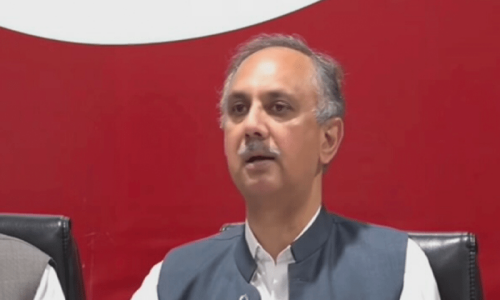MONTH of May evokes memories of the 1857 war of freedom: it began on May 10, 1857, and officially ended on June 20, 1858.
Aside from the debatable nomenclature used to describe the freedom war --- such as mutiny, revolt and rebellion — and aside from the partisan and hence debatable historical accounts written mostly by the Western scholars, some of the important historical sources on the 1857 war of freedom comprise of what the local intelligentsia was recording during the course of events. Some writers, poets and scholars were very much aware of the situation and kept on writing diaries, letters and memoirs — describing the events and presenting their point of view, during and after the events of the great tragedy that took place in 1857.
This is not to say that only those who opposed the British and praised the freedom fighters — that included both Hindus and Muslims — were absolutely right and all that has been written by the westerners is incorrect. Rather, the purpose of this piece is to remind that we must have a look at the other side of the story and must not forget to take into account the contemporaneous writings by locals, be it in Urdu or any other local language. Though it is not possible to mention all Urdu works here, it may serve as a reminder that there is more to the history of 1857 freedom war than written in English.
The first notable writing that is often quoted in this regard is Asbaab-i-Baghavat-i-Hind, or Reasons for Indian Revolt. Written by Sir Syed Ahmed Khan, often accused of siding with the British and co-operating with them, it was first published from Agra in 1859 and was the first account from the view point of Muslims.
Ghalib was another writer who was an eyewitness to the tragic incidents and he in his Urdu letters has given many clues, but was careful, as mentioned in one of his letters, to not write much details as the letters were censored by the British. But what Ghalib could describe is indeed saddening as it draws a bleak picture of Delhi, the crown jewel of the Mughals, in the aftermath of 1857 events.
Khwaja Hasan Nizami has also described in a tearful way in his diaries, stories and memoirs how Delhi and its people suffered at the hands of the British after locals were defeated in their struggle.
Some contemporaneous Urdu works that had recorded the 1857 freedom war as firsthand account include: Khadang-i-Ghadar, a diary by Moinuddin Hasan Khan, an eyewitness to events of 1857 in different cities. It records the events in some areas that have generally been ignored by the historians.
Sarguzasht-i-Dehli is another diary. Written originally in Hindi by Jeevan Lal, a double agent, to inform the British of the developments at Red Fort and elsewhere, it later on became an important source and was translated into Urdu. Zaheer Dehlvi’s Dastan-i-Ghadar is apparently his autobiography but it serves as a historical, political and cultural document as well. Nonaga, also known as Muhariba-i-Ghadar was written by Munshi Medi Lal during 1857 but it could not be published until 1871.
Urdu journalism played a courageous role before and after the freedom war. For instance, two newspapers, Dehli Urdu Akhbar and Sadiq-ul-Akhbar, were especially vociferous against the British. As a result, Moulvi Muhammad Baqar, the editor of Dehli Urdu Akhbar and Muhammad Hussain Azad’s father, was sentenced to death by the British, though on the pretext of his so-called failure to protect and save British lives during the war. The fact is Moulvi Baqar had offered refuge to Taylor, the British principal of Delhi College, and he was hiding at Baqar’s place. Neighbours became aware of Taylor’s presence and to save himself from the rage of the mob, Baqar asked Taylor to leave. He helped Taylor disguise as a native, but locals recognised him and beat him to death.
Interestingly, the British gave the impression that the “mutiny” was a ‘conspiracy’ hatched by ‘foreign powers’ and that the Russian and Iranian governments were behind it. But Khulasat-ul-Akhbar, an Urdu newspaper published from Delhi, published a note in its April 13, 1857, issue that said “a leaflet was pasted to Jami’a Mosque’s wall that said the Iranian King would come to India to rescue Indians from the British and all those who fought the British would be rewarded by the king generously. This newspaper believes this is all rubbish”. Other Urdu newspapers, too, supported the freedom fighters but with the defeat Urdu journalism suffered a great setback and almost all the newspapers published from cities known as the centre for Urdu journalism — like Delhi, Lucknow, Kawnpur and Meerut — were simply wiped out and it took quite an effort and time for Urdu journalism to take roots again.
Published in Dawn, May 16th, 2022














































Dear visitor, the comments section is undergoing an overhaul and will return soon.